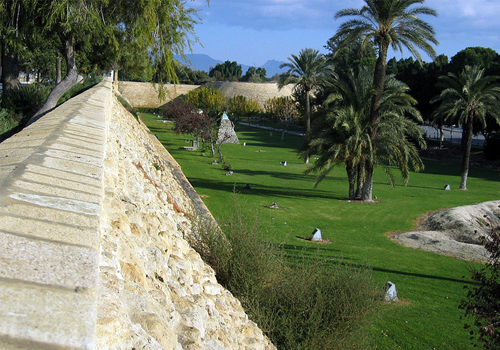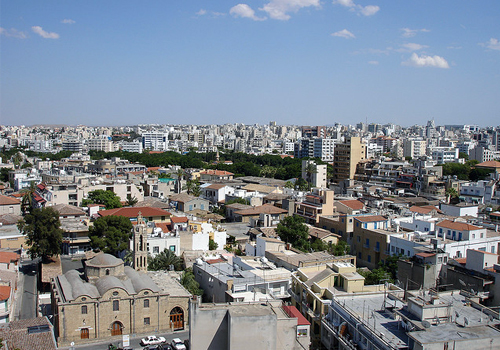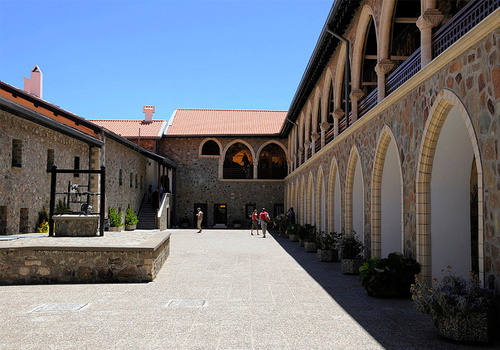Nicosia Travel Guide
Cyprus Archaeological Museum
Address: 1 Mouseiou Street, Old City Nicosia
The Cyprus Archaeological Museum was established to collect, study and display archaeological artefacts from all over the island. The first museum, located at a different site, was established in 1888; some of the exhibits are 8,500 years old. The museum is arranged in chronological order. The first hall contains pottery and implements from the Neolithic and Chalcolithic periods whilst the other rooms trace the history of Cyprus through the ages from the Bronze Age, Hellenic Period, Mycenaean times, and Roman Period to the early Byzantine.<br /><br /> A unique feature of the museum lies in the basement, where several graves rest in a dark cellar complete with skeletal remains and grave adornments that have been reconstructed. Although it is not a huge museum, visitors interested in ancient history and archaeology will be blown away by the wealth of artefacts in this collection. As an extra bonus, the museum is lovely and cool inside, with good air-conditioning, which can be a great joy on hot Cyprus days.<br /><br />
Byzantine Museum
Address: Plateia Archiepiskopou Kyprianou, Archbishopric Nicosia
The largest collection of icons on the island of Cyprus is displayed in the Byzantine Museum in the Old City of Nicosia. The museum is in the grounds of St John Cathedral, adjacent to the Archbishop's Palace, in the heart of old Nicosia and there is a great variety of things to see and do in this area. There are nearly 300 icons on display, dating from the 9th through to the 19th centuries and salvaged from all over Cyprus. They are beautifully preserved and make a strong impact on visitors, especially those interested in religious art and iconography.<br /><br /> The museum also contains an art gallery exhibiting oil paintings, maps and lithographs that give visitors insight into Cypriot culture and history. A particular gem in the museum collection are the seven fragments of the 6th century mosaics from the apse of the church of Panagia Kanakaria at Lythrankomi, and the fragments of wall painting from the 15th century, from the church of Christ Antiphonitis at Kalogrea, are another notable highlight. The collection is world-renowned and very well displayed.<br /><br />
Ethnographic Museum (former Folk Art Museum)
Address: Plateia Archiepiskopou Kyprianou, Archbishopric Nicosia
The colourful collections in this museum represent Cypriot folk art of the 19th and early 20th centuries and it is the largest collection of folk art and crafts in the whole country. The museum's collection includes wood carvings, jewellery, woven goods, tapestries, embroidery, pottery and national costumes.<br /><br /> The Ethnographic Museum is housed in the Old Bishopric in a 15th-century Gothic building that used to serve as a Benedictine Monastery and then became the palace of the Archbishop. The building is a great attraction in itself, and its location in the heart of the old town means that it is surrounded by other attractions.<br /><br /> It is a very small museum which will only need half an hour or so of your time but if you are interested in how the people of Cyprus have lived in recent centuries, and the crafts they traditionally produce, then this museum is worth a visit.<br /><br />
St John’s Cathedral (Agios Ioannis)
Address: Archbishop Kyprianos Square, Archbishopric Nicosia
The Orthodox Cathedral in the Old City was built in 1662 by Archbishop Nikiforos, dedicated to Saint John the Theologian. The cathedral was built on the site of a 14th century Benedictine chapel, also dedicated to St John.<br /><br /> The Cathedral's prize features are the iconostasis of carved wood covered with gold leaf, and the magnificent double-headed eagles. St John's is the only church in Lefkosia in which the internal wall paintings have survived in their entirety. The four large icons on the icon screen were painted by the Cretan master, Ioannis Kornaros, in 1795 and 1797, and the 18th century wall paintings depict the discovery of the tomb of St Varnavas at Salamina.<br /><br /> Although impressive from the outside the cathedral is tiny compared to many European masterpieces; the interior sets it apart, however, and makes it well worth the visit. Although the church is small, even by Nicosian standards, it is the official state church of Cyprus and contains an ornate throne for the archbishop as well as official seats for the President of the Republic of Cyprus and the Greek Ambassador to Cyprus.<br /><br />
Old City Walls
Address: Nicosia Nicosia
The walls that completely encompass Nicosia's Old City date from the Venetian occupation in the 16th century, and have a circumference of three miles (5km). Eleven heart-shaped bastions are interspersed along the walls, which have only three gates, in the north, south and east. One of the gates, the Famagusta Gate, has been restored and serves as the Lefkosia Municipal Cultural Centre, used for exhibitions, conferences, lectures and occasional performances.<br /><br /> The gate's vaulted passage leads on to the moat encircling the Old City, which has been planted to create a garden. This park area allows a great chance to stroll along the base of the walls in the garden and get a sense of their height, age and solidity. The moat was never actually designed to hold water, but as a treacherous open area that enemies would have to negotiate while the defenders attacked them from the walls<br /><br /> Unfortunately, you can no longer walk or drive the length of the fortifications but when you explore the old parts of the city you will encounter these impressive ancient walls (still so solid that they are clearly visible if you fly over the city) and they are one of the most popular attractions in Nicosia.<br /><br />
Tamassos
Address: Politiko village Nicosia
Tamassos, 13 miles (21km) south-west of Nicosia, was an ancient city kingdom renowned for its rich copper works. Recent archaeological excavations at the site have produced some exciting finds in the Royal Tombs. These were six limestone sculptures, two representing life-sized sphinxes and four lions, in a crouching position. The sculptures are believed to date to the 6th century BC when Cyprus was under Egyptian control. These artefacts are currently on display at the Cyprus Museum in Nicosia.<br /><br /> Unfortunately, extensive excavations of the ancient city have been prevented by its location under the modern village of Poilitiko. Three cemetries in the region have been discovered, dating respectively from the Bronze Age, the Archaic period and the Hellenistic era. Unlike most other ancient city states on Cyprus, there is no precise information from either history or tradition concerning the establishment of Tamassos as a human settlement, and its origins remain somewhat mysterious, although it is clear that it became an important trade city. The oldest known reference to Tamassos can be found in Homer's epic poem The Odyssey. There is a lot to see in Tamassos and it is bound to intrigue history buffs.<br /><br />
(Data provided outside US and Canada by Foreca, Data provided for US and Canada by WDT)
| Jan | Feb | Mar | Apr | May | Jun | Jul | Aug | Sep | Oct | Nov | Dec | |
| Average High | 14° | 15° | 18° | 23° | 28° | 32° | 36° | 36° | 32° | 27° | 22° | 16° |
| Average Low | 5° | 5° | 6° | 10° | 15° | 18° | 20° | 20° | 18° | 14° | 10° | 7° |
(Data provided outside US and Canada by Foreca, Data provided for US and Canada by WDT)
| Jan | Feb | Mar | Apr | May | Jun | Jul | Aug | Sep | Oct | Nov | Dec | |
| Average High | 58° | 59° | 65° | 74° | 83° | 91° | 97° | 97° | 91° | 81° | 72° | 62° |
| Average Low | 42° | 42° | 44° | 50° | 60° | 65° | 69° | 69° | 65° | 58° | 51° | 45° |
| Description Rectangular blade plug |
Voltage 240 V |
Frequency 50 Hz |
Type G |


